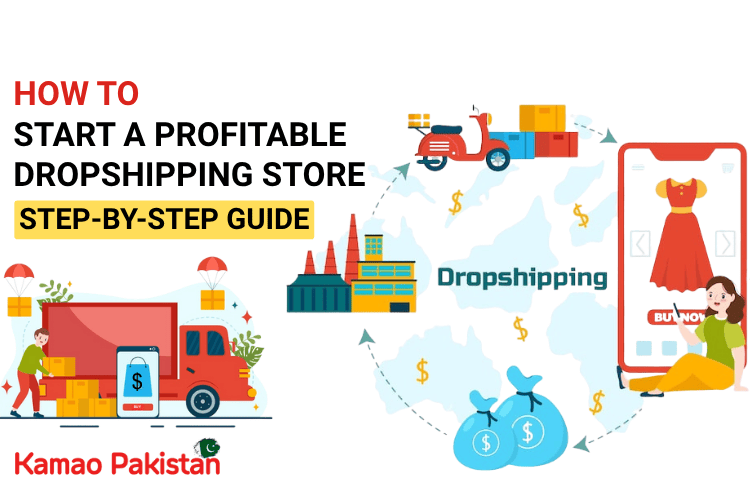Want to launch an online store without buying inventory or renting a warehouse? Dropshipping makes it possible.
In 2025, thousands of people are running online businesses where they never touch the product. Dropshipping allows you to sell physical items online, while a supplier handles storage, packaging, and shipping.
What is Dropshipping?
Dropshipping is an e-commerce model where you sell products without holding inventory. Instead, when a customer places an order, you purchase the item from a third-party supplier who ships it directly to them.
You don’t need:
- Inventory
- A warehouse
- A shipping company
Just a laptop, internet, and some smart marketing.
1. Find a Profitable Niche
A good niche = high demand + low competition.
Popular niches in 2025:
- Pet accessories
- Fitness gear
- Home and kitchen gadgets
- Travel essentials
- AI gadgets
- Eco-friendly products
Avoid oversaturated niches unless you have a unique angle. Use tools like Google Trends, Sell The Trend, and TikTok search to find trending products.
2. Find Reliable Suppliers
Choose platforms like:
- AliExpress
- CJ Dropshipping
- Spocket
- Zendrop
Check supplier reviews, shipping times, and return policies before choosing one. Prefer suppliers with fast global shipping options and product videos.
3. Build Your Online Store
You need an e-commerce platform to sell.
Most beginner-friendly platforms:
- Shopify (best for beginners)
- WooCommerce (WordPress plugin, free but needs setup)
- BigCommerce
- Wix eCommerce
Key pages:
- Homepage with clear branding
- Product pages with SEO titles + compelling images
- Legal pages (Privacy Policy, Refund Policy, Terms)
4. Add Winning Products
A “winning product” solves a problem or taps into emotion.
Product listing checklist:
- Add professional product images
- Write a clear, benefit-driven title
- Highlight key features and benefits
- Include real customer reviews if available
- Add urgency (limited stock, sale ends soon)
- Use ChatGPT to write engaging product descriptions fast.
5. Optimize for SEO
- Keyword-rich product descriptions
- ALT text for images
- Meta titles & descriptions
- Internal linking between blog + product pages
- Use SEO plugins if on WordPress, like Rank Math or Yoast
6. Set Up Payments
Integrate secure payment gateways based on your audience location.
Common options:
- PayPal
- Stripe
- Payoneer
- Shopify Payments
Make sure your payment system supports international transactions.
7. Launch and Market Your Store
No traffic = no sales.
Best marketing methods for dropshipping:
- TikTok Organic Content (short videos with viral potential)
- Facebook and Instagram Ads
- Pinterest Marketing
- Influencer Shoutouts
- Google Shopping Ads
Create short videos that demonstrate product use or show before-after results. Many dropshipping stores go viral from one well-edited video.
8. Drive Targeted Traffic
Free channels:
- TikTok & Instagram Reels with product demos
- Pinterest boards & SEO blogs
- Reddit and Quora engagement
Paid options:
- Meta Ads (Facebook/Instagram)
- Google Shopping campaigns
- TikTok Spark Ads
9. Test, Optimize, and Scale
Start with a few products, test them, and double down on the ones that sell.
Track performance using:
- Shopify Analytics
- Facebook Pixel
- TikTok Pixel
- Google Analytics
Track key metrics:
- Conversion rate
- Cost per acquisition (CPA)
- Customer lifetime value (CLV)
Once you find a winning product, scale with:
- Lookalike audiences
- Retargeting ads
- Upsells and bundles
⚠️ Common Mistakes to Avoid
- Choosing a niche based on personal interest instead of data
- Using poor-quality images or vague descriptions
- Ignoring customer complaints
- Overpricing or underpricing
- Giving up too early

